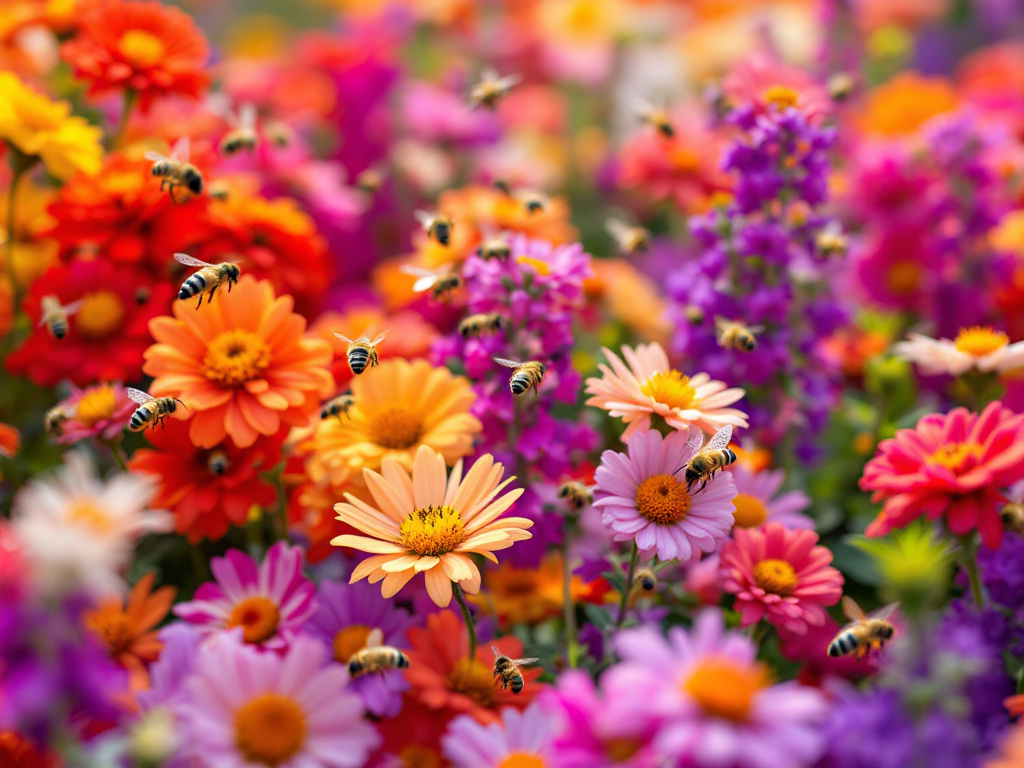
Plants that attract bees are essential for creating a vibrant and productive garden ecosystem. By cultivating a garden filled with bee-friendly flora, you can support local bee populations and enhance the health and beauty of your outdoor space. Let’s explore the fascinating world of bee-friendly plants and learn how to design a garden that buzzes with life.
Bees play a crucial role in our ecosystem, pollinating a significant portion of the food we consume. By cultivating a garden that attracts these vital pollinators, you can support local bee populations and enhance the health of your garden. Let’s explore the fascinating world of bee-friendly plants and learn how to create a thriving pollinator garden.
Understanding Bee Attraction
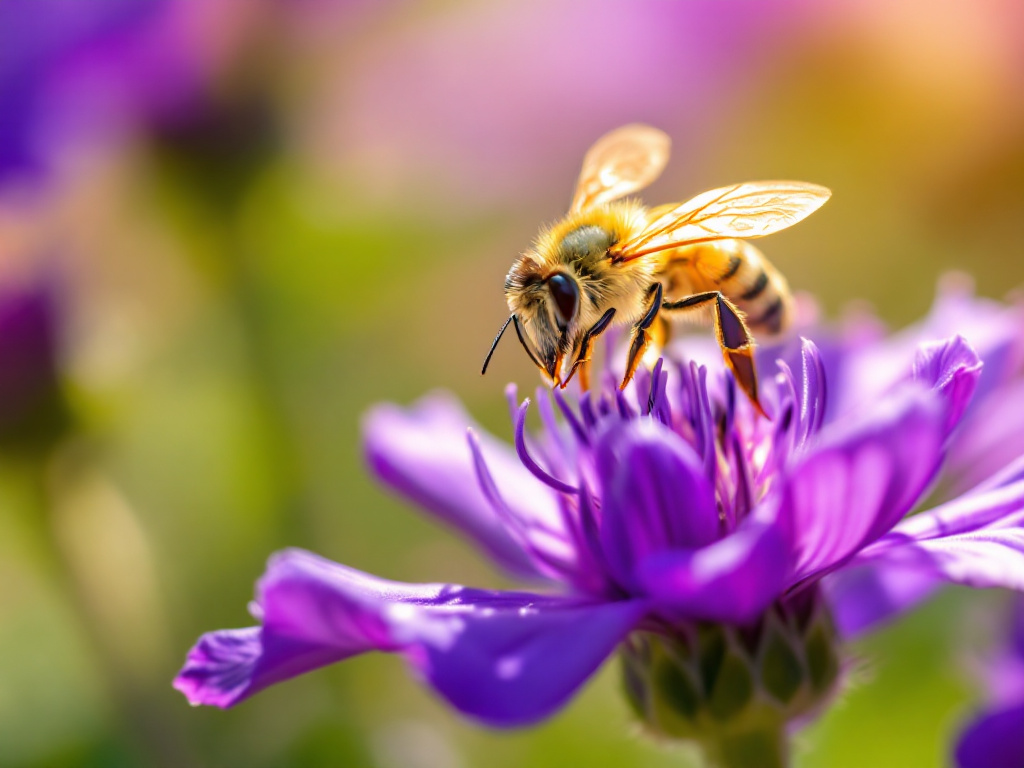
Bees are drawn to plants that attract bees offering abundant nectar and pollen, which they use as food sources. The color, scent, and shape of flowers significantly influence bee attraction. Bees are particularly fond of blue, purple, violet, white, and yellow flowers, as they can see these colors vividly. Incorporating a variety of these hues in your garden can help attract a diverse range of bee species. For more insights on bee conservation efforts, visit The Wildlife Trusts.
To create a successful pollinator garden, it’s essential to consider the types of plants that will thrive in your specific climate and soil conditions. Native plants are often the best choice, as they are well-adapted to local environments and provide the necessary resources for local bee species. Additionally, planting a mix of annuals and perennials can ensure a continuous supply of nectar throughout the growing season. Check out these educational resources on bee gardening for more tips.
Benefits of a Bee-Friendly Garden
Supporting bee populations through your garden design offers numerous benefits, both for the environment and your personal space. Here are some key advantages:
- Environmental Impact: Bees are responsible for pollinating many of the fruits, vegetables, and nuts we consume. By attracting bees to your garden, you contribute to the health and diversity of local ecosystems.
- Improved Garden Health: Pollinators help increase fruit and vegetable yields, promoting a more robust and productive garden.
- Educational Opportunities: A bee-friendly garden can serve as an educational tool, teaching children and adults about the importance of pollinators and their role in the ecosystem.
Choosing the Right Plants
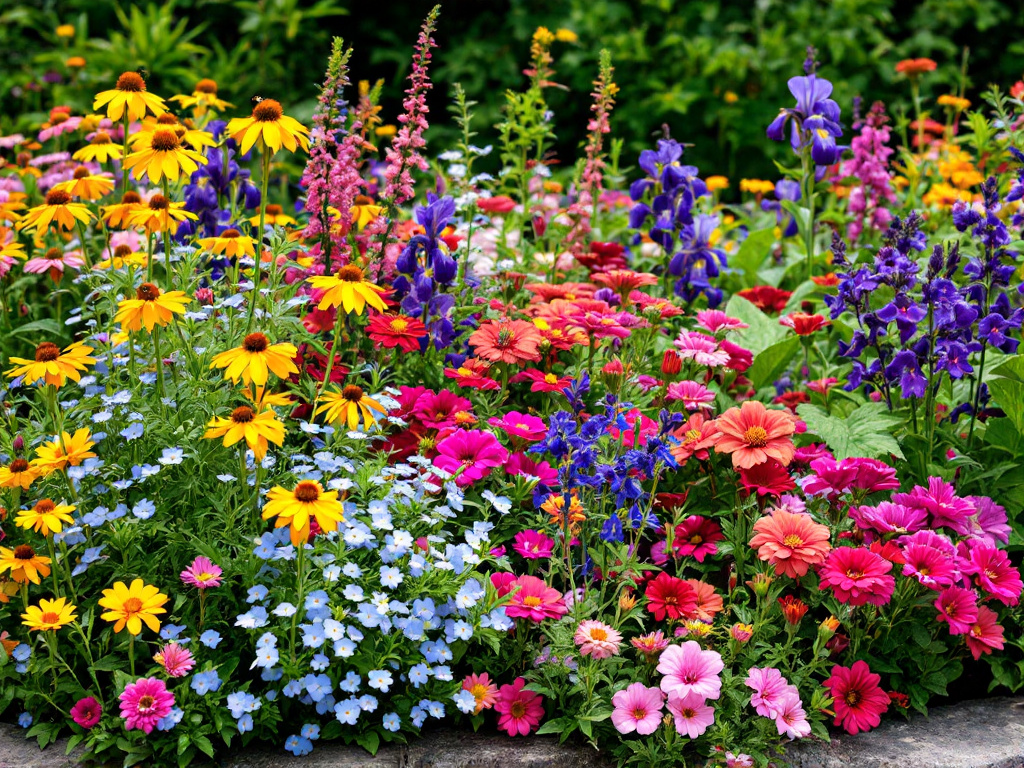
When selecting plants for your bee garden, consider the following factors:
- Climate and Soil Type: Choose plants that are well-suited to your local climate and soil conditions. Native plants are often the best choice, as they require less maintenance and provide optimal resources for local bee species.
- Blooming Season: Plant a variety of flowers that bloom at different times throughout the year. This ensures a continuous supply of nectar and pollen for bees, supporting their populations year-round.
- Plant Diversity: Include a mix of annuals, perennials, herbs, trees, and shrubs in your garden. This diversity attracts a wider range of bee species and promotes a healthier ecosystem.
Top Plants That Attract Bees
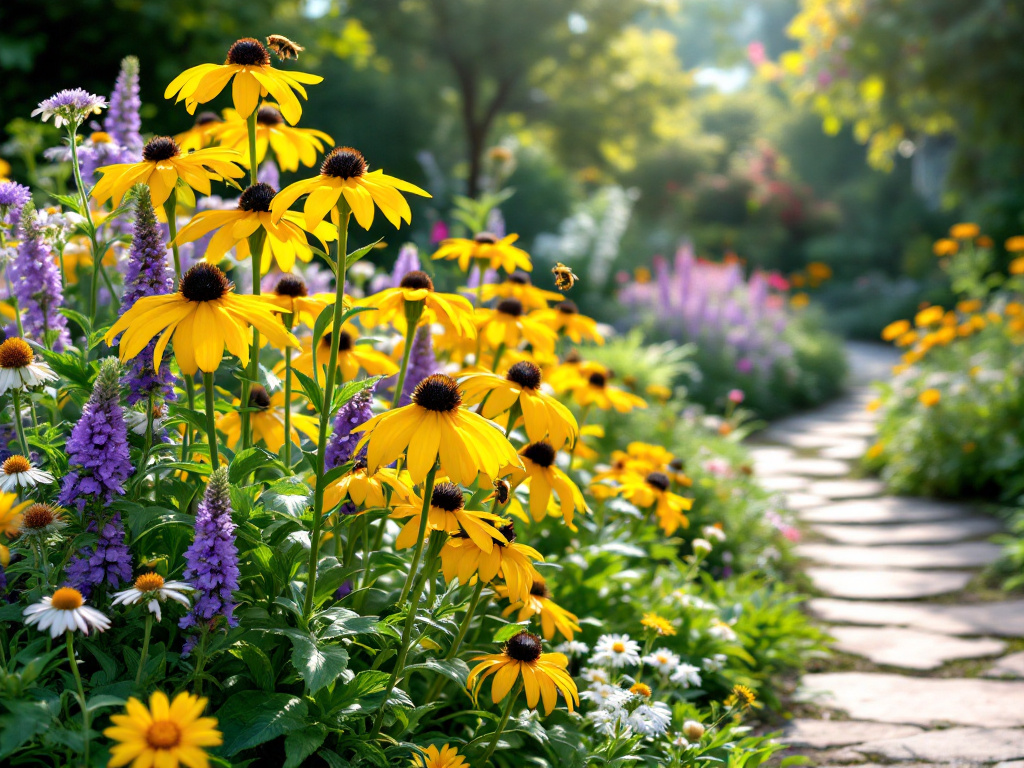
Perennials
- Rudbeckia (Black-Eyed Susan): This vibrant yellow flower is a bee magnet, attracting a variety of pollinators with its abundant nectar.
- Echinacea (Coneflower): Known for its striking pink or purple flowers, coneflowers are a favorite among bees and butterflies.
- Yarrow: This hardy perennial produces clusters of small flowers that attract bees, butterflies, and other beneficial insects.
- Veronicas (Speedwells): With long flower spikes in shades of blue, pink, purple, and white, Veronicas are a popular choice for attracting bees and hummingbirds.
Annuals
- Marigolds: These bright and cheerful flowers attract bees and other pollinators, while also helping to deter pests from your garden.
- Zinnias: Available in a variety of colors, zinnias are easy to grow and attract a wide range of bee species.
- Cosmos: These delicate flowers are a favorite among bees and add a touch of elegance to any garden.
Herbs
- Lemon Balm: This fragrant herb attracts bees with its lemon-scented leaves and tiny white flowers.
- Basil: A culinary favorite, basil also attracts bees and other pollinators to your garden.
- Lavender: Known for its soothing scent, lavender is a popular choice for attracting bees and adding a touch of beauty to your garden.
Trees and Shrubs
- Fruit Trees: Cherry, plum, and other fruit trees provide essential nectar for bees, particularly in the early spring.
- Abelia: This compact shrub produces delicate white and pink flowers that attract bees and continue to bloom after many summer flowers have faded.
Designing a Bee-Friendly Garden
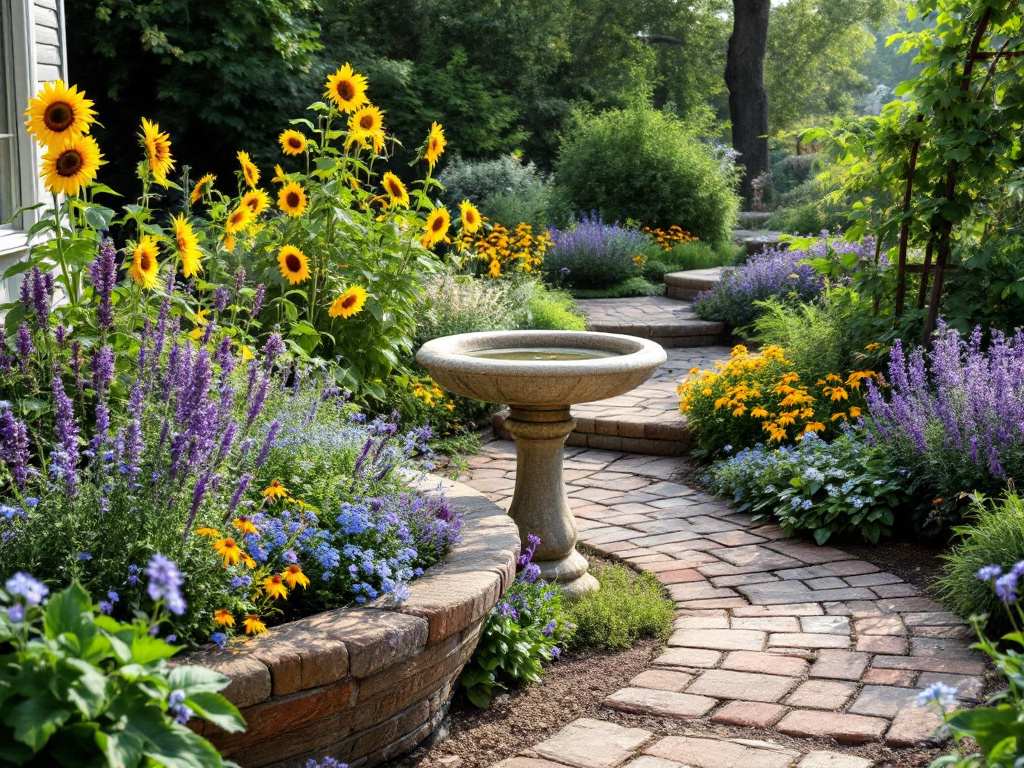
Creating a bee-friendly garden involves more than just selecting the right plants. Here are some design tips to maximize your garden’s appeal to pollinators:
- Plant in Clusters: Grouping plants together makes it easier for bees to locate and forage from your garden.
- Provide a Variety of Blooming Times: Ensure your garden has flowers blooming from early spring to late fall, providing a continuous supply of nectar for bees.
- Include Water Sources: Adding a shallow birdbath or other water feature provides bees with a place to drink and cool off.
- Avoid Pesticides: Chemical pesticides can harm bees and other beneficial insects. Opt for natural pest control methods to keep your garden bee-friendly.
Maintaining Your Bee Garden
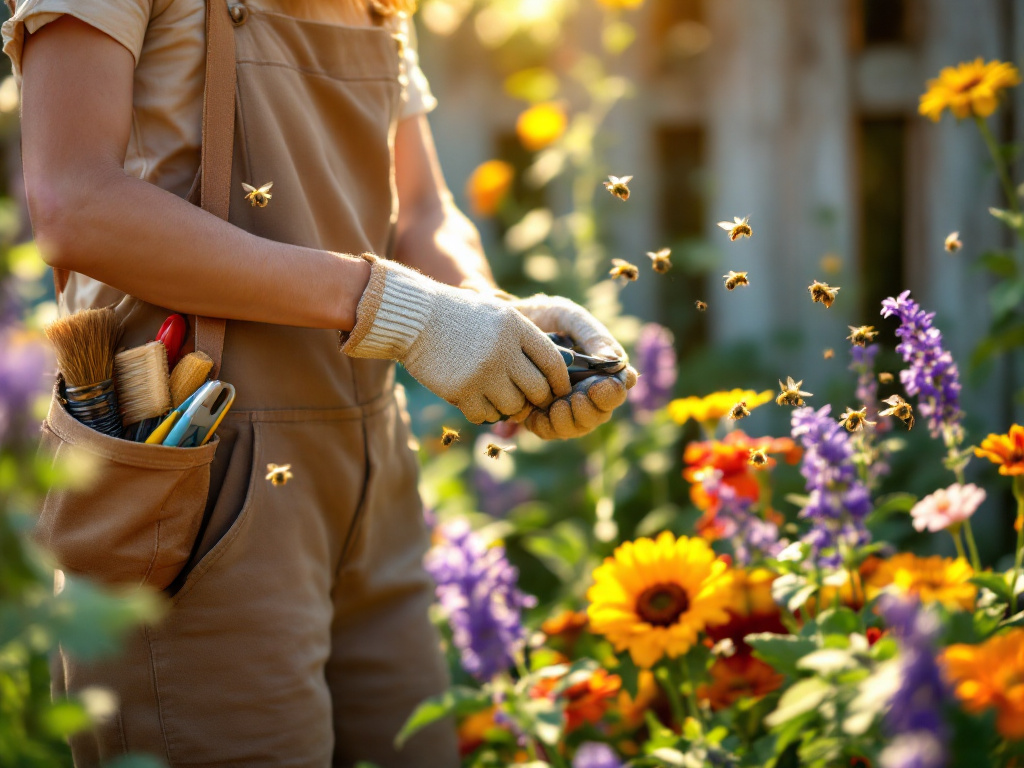
Regular maintenance is essential for keeping your bee garden thriving. Here are some tips for ongoing care:
- Deadhead Flowers: Removing faded flowers encourages plants to produce more blooms, providing a continuous supply of nectar for bees.
- Provide Nesting Sites: Include features like bee hotels or bare patches of soil where bees can nest and lay their eggs.
- Monitor for Pests and Diseases: Regularly inspect your plants for signs of pests or diseases, and address any issues promptly to keep your garden healthy.
Community and Educational Initiatives
Engaging with community bee conservation efforts can amplify the impact of your bee-friendly garden. Here are some ways to get involved:
- Join Local Beekeeping Groups: Connect with other bee enthusiasts in your area to share knowledge and resources.
- Participate in Community Garden Projects: Collaborate with neighbors to create and maintain public bee gardens.
- Educate Others: Share your knowledge about the importance of bees and pollinator gardens with friends, family, and your community.
FAQs
What are the best plants for attracting bees in different seasons?
- Spring: Plant early-blooming flowers like crocuses, daffodils, and hyacinths to attract bees in the spring.
- Summer: Opt for vibrant summer blooms like sunflowers, bee balm, and black-eyed Susans to keep bees visiting your garden.
- Fall: Include late-blooming flowers like asters, goldenrod, and sedum to provide nectar for bees in the fall.
How can I attract bees to my garden if I live in an urban area?
- Container Gardening: Plant bee-friendly flowers in pots and containers on balconies or patios.
- Vertical Planting: Utilize wall-mounted planters or trellises to maximize space and attract bees.
- Community Gardens: Participate in local community garden projects to create shared bee-friendly spaces.
What role do bee hotels play in supporting bee populations?
Bee hotels provide essential nesting sites for solitary bees, which make up a significant portion of the bee population. By including bee hotels in your garden, you support the reproduction and survival of these important pollinators. Learn how to create a DIY bee waterer to further support your local bee population.
How can I ensure my garden is safe for bees?
- Avoid Harmful Chemicals: Opt for natural pest control methods instead of chemical pesticides.
- Provide Safe Nesting Sites: Include features like bee hotels or bare patches of soil where bees can nest and lay their eggs.
- Offer Water Sources: Add shallow water features to provide bees with a place to drink and cool off.
By following these guidelines and incorporating a variety of bee-friendly plants into your garden, you can create a thriving pollinator haven that supports local bee populations and enhances the beauty and productivity of your outdoor space. For more ideas on enhancing your garden’s aesthetic, check out our guide on vibrant floral arrangements in modern outdoor decor. Additionally, discover tips for growing plants in a small garden to maximize your space and attract pollinators.